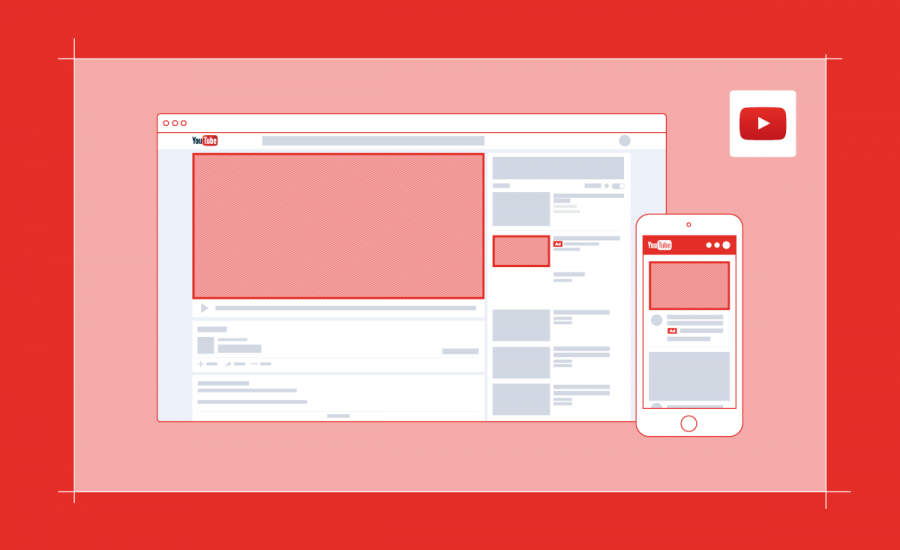In today’s digital age, video content has become an increasingly important tool for businesses to connect with their audiences. With over 2 billion monthly active users, YouTube has emerged as a powerful platform for advertising.
This article aims to provide a comprehensive guide to the various types and formats of YouTube ads, exploring their functionality, best practices, and suitability for different campaign goals and target audiences.
So, whether you’re a seasoned marketer or a novice advertiser, read on to discover how to leverage the power of YouTube advertising for your business.
The Basics of YouTube Ads
YouTube advertising refers to promoting a product, service, or brand on the video-sharing platform, YouTube. This can be done through various types of ads, including skippable, non-skippable, bumper, overlay, display, and sponsored cards.
Statistics show that YouTube ads have a significant reach and impact on consumers. For example, YouTube reaches more 18-49-year-olds in the US than any cable network.
Additionally, 70% of viewers bought from a brand after seeing it on YouTube. These numbers demonstrate the potential of YouTube advertising for businesses to connect with their target audience and drive conversions.
Guide to Use AI for Social Media Channels
Types of YouTube Ads
YouTube offers various types of ads to businesses to promote their products, services, or brands to a massive audience. In this section, we will discuss the different types of YouTube ads in detail.
Skippable Ads:
Skippable ads allow viewers to skip the ad after 5 seconds, making it less interruptive and more viewer-friendly. Advertisers pay only when viewers watch the entire ad or the first 30 seconds, whichever comes first.
Skippable ads should have a strong hook within the first 5 seconds to grab the viewer’s attention. Advertisers should focus on telling a story, keeping the ad concise and relevant to the target audience, and ensuring high-quality visuals and audio.
Skippable ads are recommended for businesses looking to promote their products or services to a broad audience. They are suitable for businesses with longer videos that can provide more information about their products or services.
Non-Skippable Ads:
Non-skippable ads are ads that viewers cannot skip, and they usually last for 15-20 seconds. They are more interruptive and can often be frustrating for viewers.
Some successful non-skippable ads are short, creative, and have a clear message. They usually have a strong call to action and are relevant to the target audience.
Non-skippable ads should be used sparingly, as they can lead to viewer frustration and may negatively impact the brand’s image. They are suitable for businesses with shorter videos and a clear message to convey.
Bumper Ads:
Bumper ads are short ads that last for 6 seconds or less. They are meant to capture the viewer’s attention quickly and convey the brand’s message in a concise and memorable manner.
The maximum duration of a bumper ad is 6 seconds, which can be challenging for advertisers to convey their message effectively.
Advertisers should focus on creating visually appealing ads with strong storytelling elements. They should aim to convey the brand’s message quickly, using humor or emotion to engage the viewer.
Overlay Ads:
Overlay ads are semi-transparent ads that appear at the bottom of a video. They are usually in the form of a banner or a text ad and are less interruptive than other ad formats.
Advertisers should focus on creating visually appealing and clickable ads that are relevant to the video content. They should ensure that the overlay ad is not too distracting or intrusive.
Advertisers should track the click-through rate (CTR) and conversion rates to measure the success of overlay ads. They can also use YouTube analytics to track viewer engagement.
Display Ads:
Display ads appear on the right-hand side of the YouTube video player and are usually in the form of a banner or a text ad. They are less interruptive and more viewer-friendly.
Advertisers can target their display ads based on demographics, interests, and keywords. They can also choose to run their ads on specific videos or channels.
Successful display ads on YouTube are visually appealing, relevant to the target audience, and have a strong call to action.
Sponsored Cards:
Sponsored cards are small, clickable cards that appear in a YouTube video. They provide additional information about the product or service being advertised.
Sponsored cards can be integrated with other YouTube features such as annotations and end screens. They can also be used to promote other videos or channels.
Advertisers can use sponsored cards to drive conversions by providing relevant information and a clear call to action. They can also use them to promote their other products or services.
Choosing the Right Format for Your Campaign
When it comes to launching a successful YouTube advertising campaign, selecting the right ad format is crucial.
However, businesses must carefully evaluate the factors that influence ad format selection to ensure that their campaign meets its goals and objectives.
One of the most critical factors to consider is the campaign’s goals and objectives. For instance, if the goal is to increase brand awareness, businesses may opt for non-skippable video ads that ensure that the audience views the entire ad.
If the objective is to drive engagement, skippable video ads that offer an interactive experience may be the best choice.
Another crucial factor is the target audience characteristics. Businesses must tailor their ad format to suit their audience’s preferences and interests. For example, if the target audience is younger viewers who prefer short-form content, bumper ads that are six seconds long may be the best option.
Lastly, budget considerations are essential when selecting the right ad format. Different ad formats have varying costs, and businesses must choose an ad format that fits their budget while still meeting their campaign objectives.
In addition to these factors, analyzing successful YouTube ad campaigns and learning from failures can also provide valuable insights into ad format selection. Case studies can help businesses understand which ad formats work best for similar campaigns and what common pitfalls to avoid.
Conclusion
The world of video advertising on YouTube is constantly evolving, and businesses need to keep up with the changes to stay ahead of the competition.
By leveraging the diverse ad formats available on the platform, businesses can create engaging and effective campaigns that reach their target audience.
Some key takeaways to keep in mind include the importance of storytelling, the need for authenticity, and the value of data-driven insights. As YouTube continues to grow and evolve, businesses that stay up-to-date with the latest trends and best practices will be best positioned to succeed.






